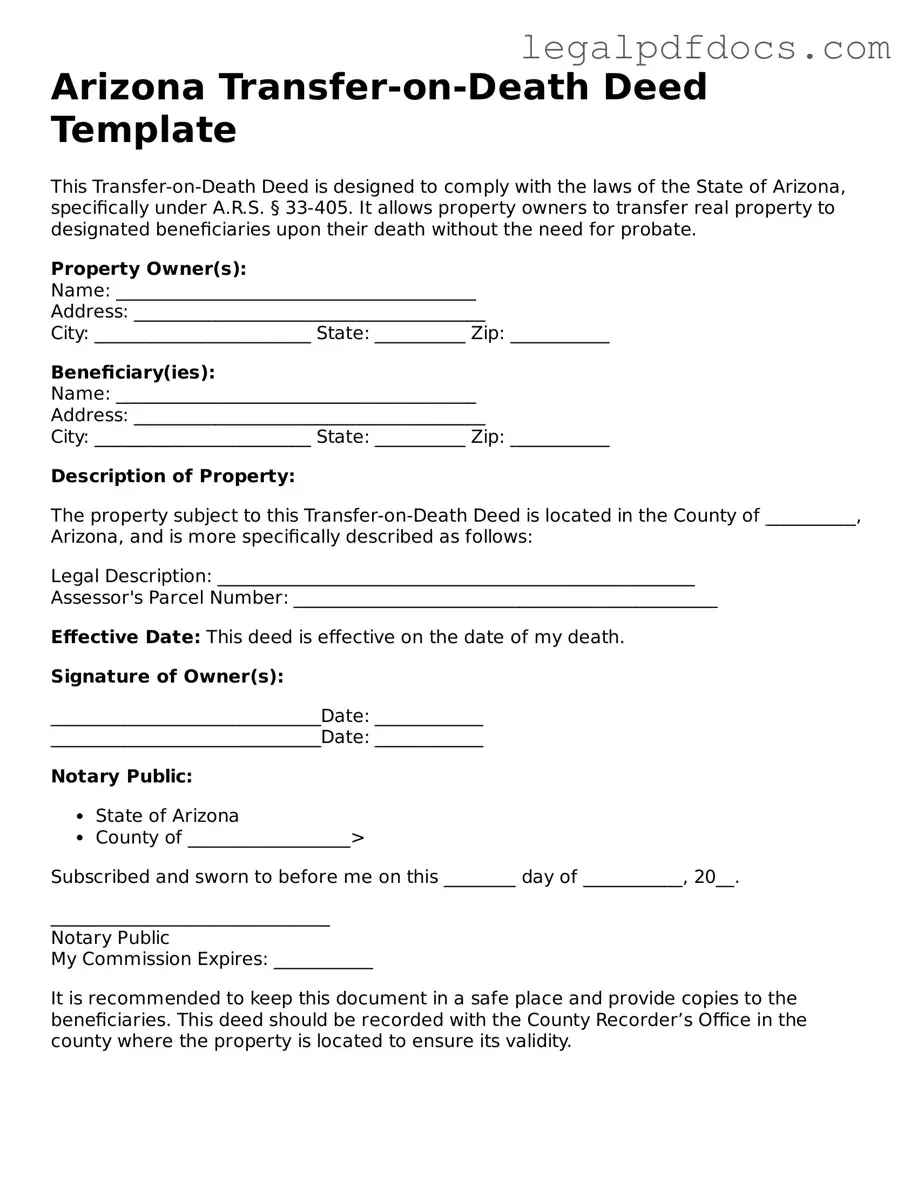Official Transfer-on-Death Deed Form for Arizona
The Arizona Transfer-on-Death Deed form allows property owners to designate beneficiaries who will inherit their real estate upon their death, bypassing the probate process. This straightforward legal tool provides a way to transfer property while maintaining full control during the owner's lifetime. For those interested in simplifying the transfer of their assets, filling out the form is a crucial step—click the button below to get started.
Open Transfer-on-Death Deed Editor Here
